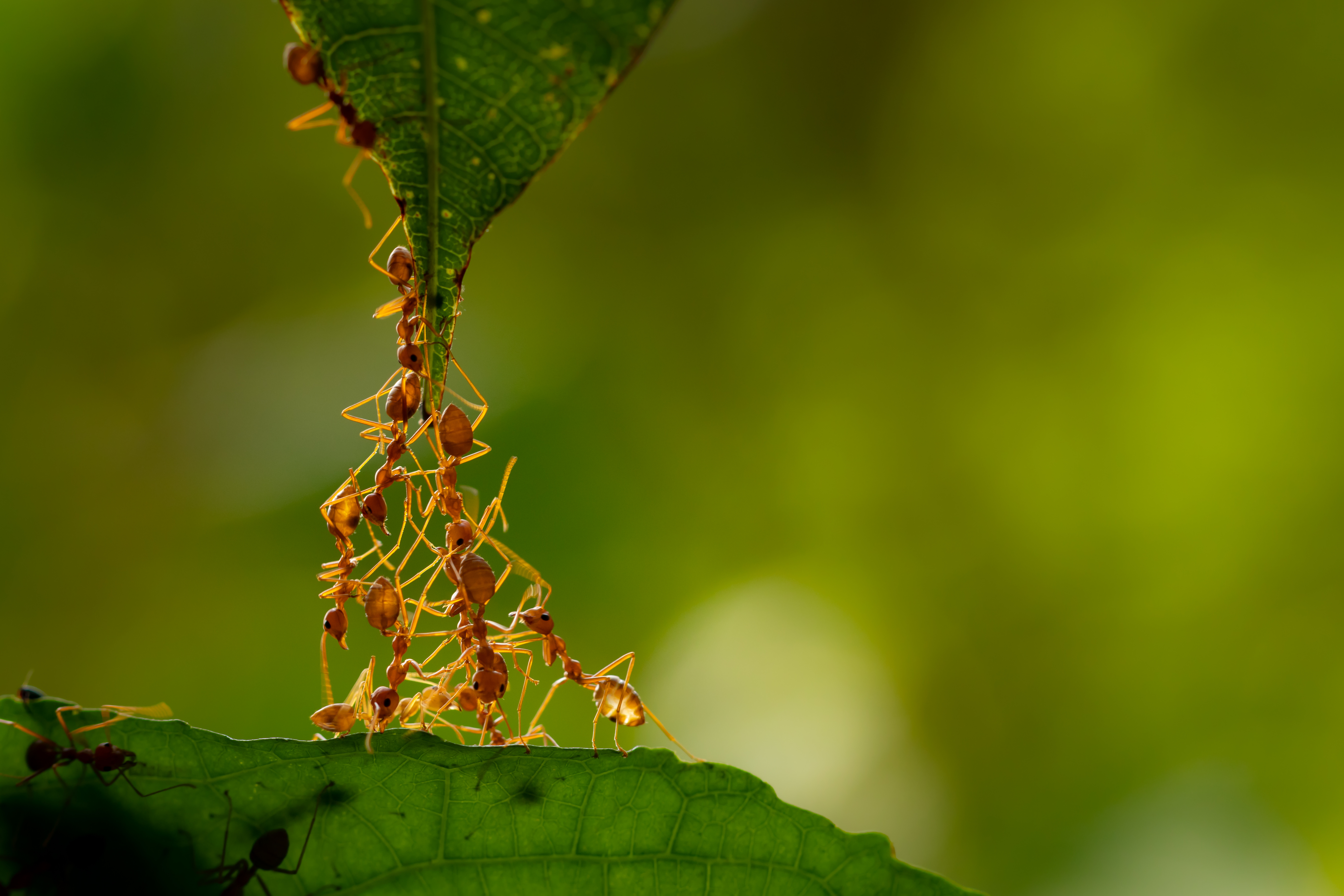
Human beings did not invent democracy. Among certain animal species, decisions are also made in accordance with the majority opinion, with each individual having an equal degree of influence. For example, certain flocks of birds decide how and when to fly based on how the majority chooses to move.
In a frequently observed phenomenon unique to human beings, the majority will concede to the minority on a certain issue in order to avoid conflict, while compromising on its needs, convenience or views in the process. Now, for the first time, scientific research has identified a similar concession by the majority among animals. The experiment was conducted on carpenter ants (Camponotus sanctus), a Middle Eastern species commonly found in Israel in the mountainous areas around Jerusalem. The findings were published last week in the journal Current Biology.
The study looked at a known ant behavior called “house-hunting.” Professor Ofer Feinerman of the Weizmann Institute Department of Physics of Complex Systems says that ants often need to leave their nests, either because it was destroyed or became too small for them and cannot be expanded. When that happens, “They search for another home in the surrounding area, kind of like people do, and they have to select a location and move to it.”
Numerous parameters are taken into consideration in the ants’ choice of real estate, such as how well-protected the location is, how large it is, how far it is from the original nest, what else is in the area and so on. In a democratic process, each one of the ants in the search party makes its own decision based on the potential sites it saw and ultimately the group moves to the best new nest out of all the possibilities. But what happens when there are several potential new locations and the searcher ants are divided in their opinion of them? The researchers artificially created such a situation to investigate this question.
Blame Ant-ifa
Research fellow Harikrishnan Rajendran conducted experiments in which he gave ants two options for a new nest, one dark and one brightly lit – i.e., a poor choice since an illuminated nest is less protected. The researchers attached a tiny barcode sticker (which did not bother the ants) to the thorax of each ant and filmed the experiment so they could see when an ant was approaching each one of the nests.
An automatic gate was affixed to each nest, “similar to a workplace where you have to swipe a card to get in,” Feinerman says. The barcode determined whether an ant had permission to enter or not. All of the ants were able to enter the poorer choice of nest, but only a smaller number (though still a majority) were also permitted to enter the better choice of nest. “For the ones that could not enter the good nest, the second nest was the best option around and they were certain that was where they needed to move to,” Feinerman says.
The ants that were given both options now faced a dilemma. Should they move to the dark nest, which would be safer for them but keep them apart from the rest of their colony, or move to the worse nest? For an ant colony that is dependent on its queen for survival, splitting up would have serious consequences. “The question was what the colony would choose to do – split up or stay in the worse nest,” Feinerman says. “We found that if the minority was not very small, the ants chose to go to the worse place, together. In other words, the majority gave up a better situation for itself in order to maintain social cohesion.”
He likens the situation to one in which you have a number of political parties and a small party obtains power that is disproportionate to its percentage of the population because it is prepared to go all out to get its way. “Basically, it says, ‘If my demands are not met, I’m leaving the coalition.’” This is a known occurrence among humans, but up to now had not been observed among animals.
Graduate student Amir Haluts and Professor Nir Gov developed a model that depicts the decision-making dynamic in an ant colony and found that it is based upon a cycle of positive feedback: The more ants there are in a nest, the less inclined they are to leave the nest, because they can sense that there are more ants in there. This is the mechanism that enabled the ants that were exposed to both nests to choose the less favorable option.
Since all of the ants entered the poorer choice – the brightly lit nest – while only some were able to enter the dark nest, the positive feedback cycle was stronger for the brighter nest. Thus, as the number of ants doing the same action increases, the more this action is reinforced. Haluts compares this to what happens nowadays on social media. “When you hear a lot of people with your same opinion, even if your opinion is incorrect or worse than other possibilities, it will be reinforced.”
Feinerman cautions that because of the major biological differences between ants and humans, one cannot extrapolate from ant behavior to human behavior. One key difference is that, in an ant colony, all of the individuals share an identical interest. “In the experiment we created a conflict on the knowledge level, not on the interest level,” he says. With people, however, there are of course many tensions that come from competing interests. But as with ants, with people there are often differences in knowledge that come into play – differences that are amplified by social media where people only hear the views they expect to hear.
